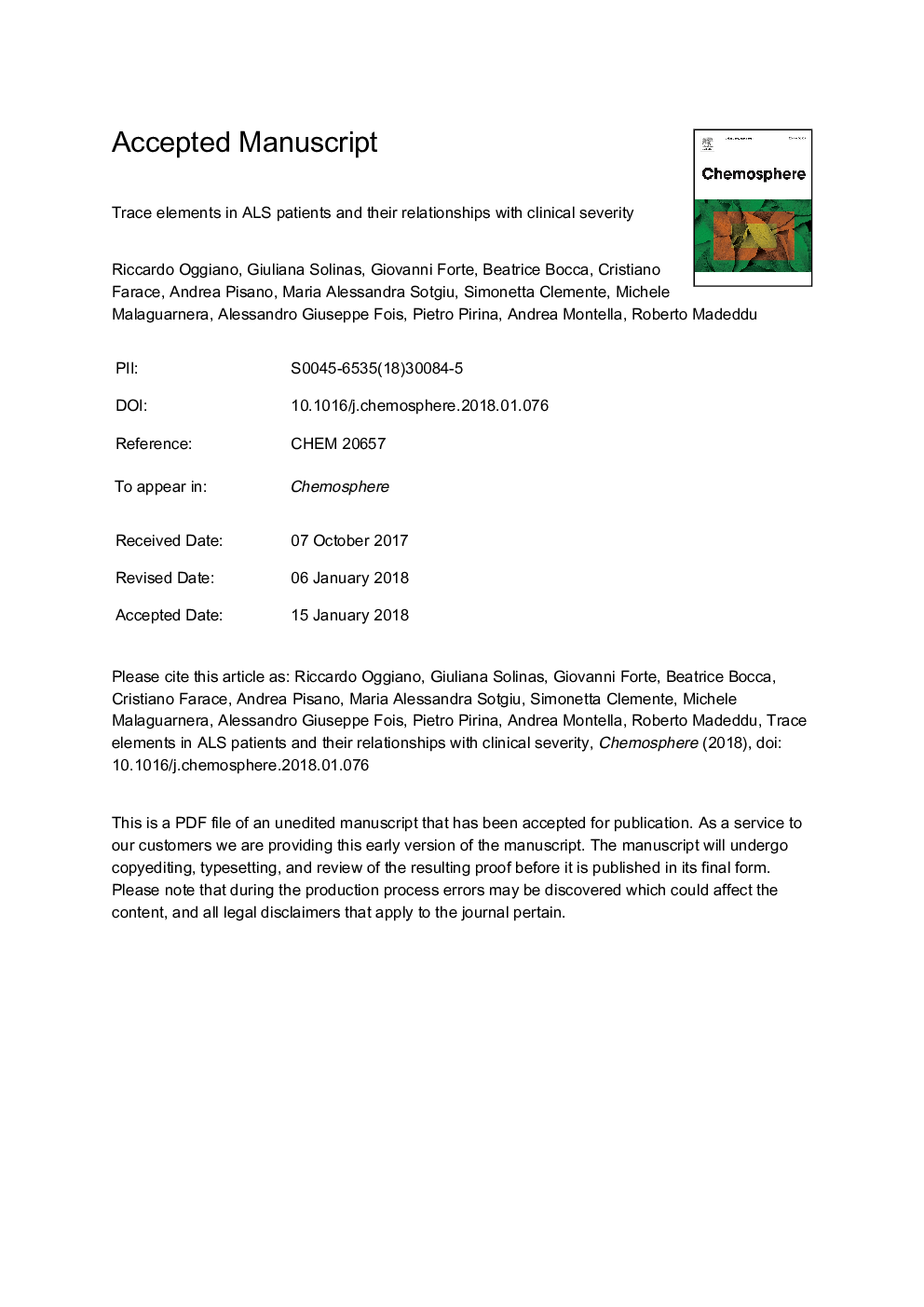| Article ID | Journal | Published Year | Pages | File Type |
|---|---|---|---|---|
| 8852012 | Chemosphere | 2018 | 37 Pages |
Abstract
An exploratory study of trace elements in ALS and their relationships with clinical severity was detected. Amyotrophic lateral sclerosis (ALS) is a neurodegenerative disorder that causes irreversible damage in humans, with the consequent loss of function of motoneurons (MNs), with a prognosis up to 5 years after diagnosis. Except to genetic rare cases it is not known the etiology of the disorder. Aim of our research is to investigate the possible role of heavy metals in the severity of the disease. In this study, by the use of plasma mass (ICP-MS), we have analyzed the content of essential and heavy metals such: Pb, Cd, Al, Hg, Mn, Fe, Cu, Zn, Se, Mg, and Ca, in blood, urine and hair of ALS patients and controls; moreover we divided the patients in two groups for disease severity and analyzed the difference among the groups, in order to study a possible involvement of metals in the severity of the damage. Our results suggest a protective role of Selenium, involved in protective antioxidant mechanisms, and a risk factor in the case of presence of Lead in blood. The levels of the other metals are not easy to interpret, because these may be due to life style and for essential metals a consequence of the disease condition, not a cause.
Related Topics
Life Sciences
Environmental Science
Environmental Chemistry
Authors
Riccardo Oggiano, Giuliana Solinas, Giovanni Forte, Beatrice Bocca, Cristiano Farace, Andrea Pisano, Maria Alessandra Sotgiu, Simonetta Clemente, Michele Malaguarnera, Alessandro Giuseppe Fois, Pietro Pirina, Andrea Montella, Roberto Madeddu,
